 1994 Peugeot 306 Sedan (7B) Dimensions, Size & Specs
1994 Peugeot 306 Sedan (7B) Dimensions, Size & SpecsMeasurements of the 1994 Peugeot 306 Sedan, engineered for optimal performance and comfort
| Dimensions | |
|---|---|
| Length: | 4232-4239 mm166.6-166.9 in13.9-13.9 ft |
| Width: | 1689 mm66.5 in5.5 ft |
| Height: | 1386 mm54.6 in4.5 ft |
| Trunk Capacity: | 463 liter16.4 cu ft |
| Weight Specifications | |
| Curb Weight: | 1040-1150 kg2293-2535 lbs |
| Maximal permitted Weight: | 1565-1675 kg3450-3693 lbs |
| Tire Specifications | |
| Rims Size: |
|
| Tire Sizes: |
|
The Peugeot 306 Sedan (7B) is a compact sedan produced from 1994 to 1997, offering a blend of practical dimensions and lightweight design typical of mid-1990s European sedans. The sedan measures between 4232 mm and 4239 mm (166.7 to 166.9 inches) in length, making it a manageable vehicle for urban and suburban driving. It has a width of 1689 mm (66.5 inches), providing a comfortable cabin space without being overly wide for narrow streets and parking spaces. The height stands at 1386 mm (54.6 inches), which contributes to a low center of gravity, improving handling and stability. Weighing between 1040 kg and 1150 kg (2293 to 2535 pounds) curb weight, the Peugeot 306 Sedan is relatively light, aiding fuel efficiency and responsiveness. Its maximum weight ranges from 1565 kg to 1675 kg (3450 to 3693 pounds), accommodating passengers and cargo within safe design limits. The vehicle’s luggage capacity is a generous 463 liters (16.3 cubic feet), ideal for everyday use including groceries, luggage for trips, or sports gear. The sedan rides on 14-inch rims with tire sizes varying among 185/65 R14, 185/60 R14, and 175/70 R13, ensuring a balance between comfort, grip, and fuel efficiency. Overall, the Peugeot 306 Sedan (7B) is a well-rounded compact sedan from the mid-90s that offers practical dimensions and efficient use of space, fitting well within the European compact car segment of its time.
Discover the standout features that make the 1994 Peugeot 306 Sedan a leader in its class
Have a question? Please check our knowledgebase first.
The Peugeot 306 Sedan (7B), produced from 1994 to 1997, has a length ranging between 4232 mm and 4239 mm (approximately 166.5 to 167 inches). This modest length reflects the car's compact sedan classification, providing enough cabin and trunk space for typical family and daily driving needs while maintaining manageable urban parking and maneuverability.
The Peugeot 306 Sedan (7B) measures 1689 mm (about 66.5 inches) in width. This width provides a balanced interior space allowing comfortable seating for passengers, particularly in front seats. It also aids in maintaining a compact footprint on the road, facilitating driving in tight urban environments while offering sufficient shoulder room within a compact sedan segment.
The height of the Peugeot 306 Sedan (7B) is 1386 mm (approximately 54.6 inches). The relatively low height contributes to a sporty, aerodynamic profile, which may enhance stability and handling on highways and winding roads. Inside, it provides a cozy but not cramped headroom, fitting well within the design typical of 1990s compact sedans.
The curb weight of the Peugeot 306 Sedan (7B) varies between 1040 kg and 1150 kg (roughly 2293 to 2535 lbs). This weight range places the 306 Sedan in the lightweight category, helping it deliver responsive handling and relatively efficient fuel economy. A lighter car often accelerates quicker and has more agility, which benefits both city driving and spirited country road excursions.
The Peugeot 306 Sedan (7B) has a maximum permissible weight between 1565 kg and 1675 kg (about 3451 to 3692 lbs). The maximum weight includes passengers, cargo, and fuel. Knowing this figure is critical for safety, as exceeding it can affect vehicle handling, braking distance, suspension performance, and tire wear. Staying within limits ensures optimal car performance and safety compliance.
The Peugeot 306 Sedan (7B) offers a luggage capacity of 463 liters (approximately 16.3 cubic feet). This is a generous trunk space in the compact sedan category, allowing owners to store large suitcases, shopping bags, or sports equipment easily. The capacity supports family outings or everyday errands, making it quite practical for small families and commuters in need of decent cargo room.
Yes, the Peugeot 306 Sedan (7B) fits comfortably into a standard residential garage. With a length of around 4.23 meters (approximately 13.9 feet), width of 1.69 meters (about 5.54 feet), and height of 1.39 meters (roughly 4.56 feet), it has compact dimensions ideal for typical garage sizes that accommodate cars ranging from compact to midsize. It leaves sufficient room for easy entry and exit as well as minor storage around the vehicle.
Compared to its predecessor, the Peugeot 309 sedan, the 306 Sedan (7B) offers a more modern and aerodynamic design with slightly larger and more refined dimensions. The 306 is longer and wider, improving interior space and road presence. These enhancements contribute to increased passenger comfort and better driving dynamics, reflecting Peugeot's evolution toward sportier, more stylish compact sedans in the mid-1990s.
The Peugeot 306 Sedan (7B) competes closely in size with contemporaries such as the Ford Escort and Volkswagen Golf Mk3 sedans. All have similar lengths around 4.2 to 4.3 meters (about 13.8 to 14.1 feet), but the 306 offers a slightly larger luggage capacity at 463 liters compared to the Escort's 450 liters and Golf's roughly 430 liters. Curb weights are comparable, keeping the 306 competitive in handling and fuel efficiency. Additionally, Peugeot's emphasis on ride comfort and sporty handling sets the 306 apart as a refined and practical choice in the compact sedan segment of the 1990s.
The Peugeot 306 Sedan (7B) comes with standard rim sizes of 14 inches, paired with tire sizes such as 185/65 R14, 185/60 R14, and 175/70 R13 depending on the variant. These tire dimensions offer a balance between ride comfort and responsive handling typical of compact sedans of the era. The 14-inch rims support stability and grip on various road surfaces, while the relatively higher tire profiles help absorb road imperfections for a smoother ride.
Discover similar sized cars.
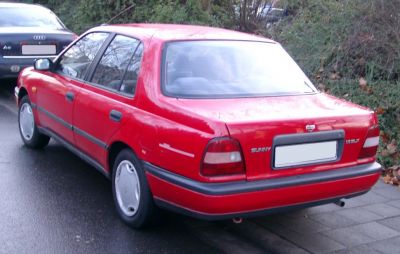
| Production: | 1990-1995 |
|---|---|
| Model Year: | 1991 |
| Length: | 4230 mm166.5 in |
| Width: | 1690 mm66.5 in |
| Height: | 1395 mm54.9 in |
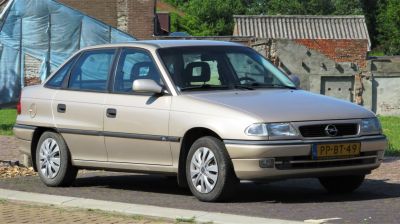
| Production: | 1994-1998 |
|---|---|
| Model Year: | 1994 |
| Length: | 4239 mm166.9 in |
| Width: | 1852 mm72.9 in |
| Height: | 1410 mm55.5 in |
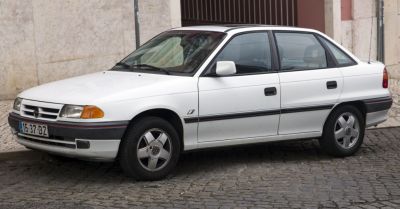
| Production: | 1991-1994 |
|---|---|
| Model Year: | 1992 |
| Length: | 4239 mm166.9 in |
| Width: | 1795 mm70.7 in |
| Height: | 1410 mm55.5 in |

| Production: | 1992-1997 |
|---|---|
| Model Year: | 1993 |
| Length: | 4270 mm168.1 in |
| Width: | 1685 mm66.3 in |
| Height: | 1380 mm54.3 in |
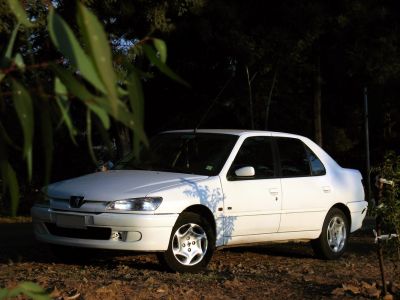
| Production: | 1997-2002 |
|---|---|
| Model Year: | 1997 |
| Length: | 4267 mm168.0 in |
| Width: | 1689 mm66.5 in |
| Height: | 1386 mm54.6 in |
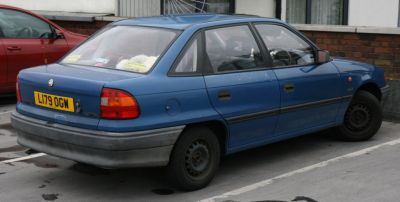
| Production: | 1991-1998 |
|---|---|
| Model Year: | 1991 |
| Length: | 4239 mm166.9 in |
| Width: | 1689 mm66.5 in |
| Height: | 1389-1410 mm54.7-55.5 in |

| Production: | 1992-1995 |
|---|---|
| Model Year: | 1993 |
| Length: | 4229 mm166.5 in |
| Width: | 1690 mm66.5 in |
| Height: | 1397 mm55.0 in |

| Production: | 1992-1996 |
|---|---|
| Model Year: | 1992 |
| Length: | 4248 mm167.2 in |
| Width: | 1696 mm66.8 in |
| Height: | 1417 mm55.8 in |
